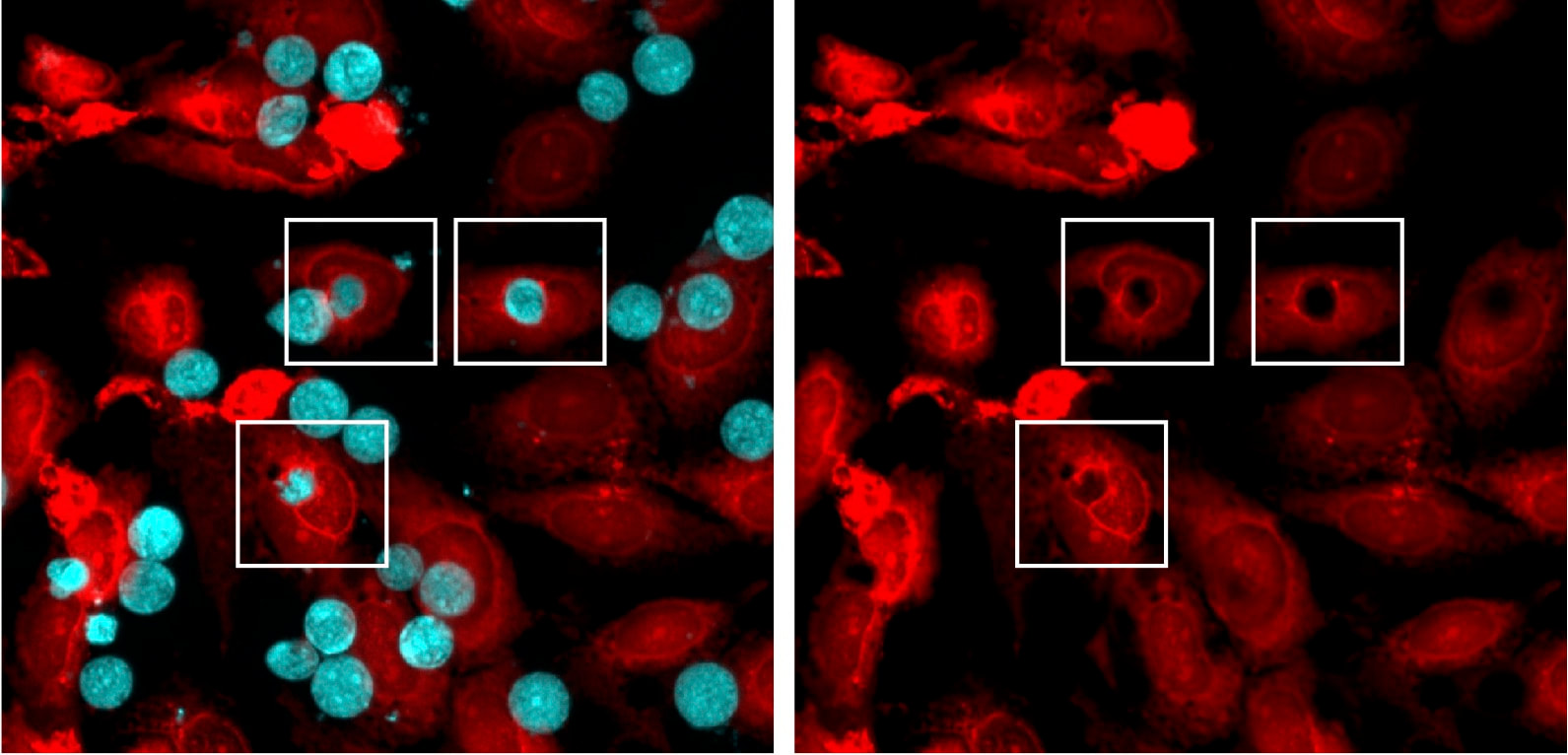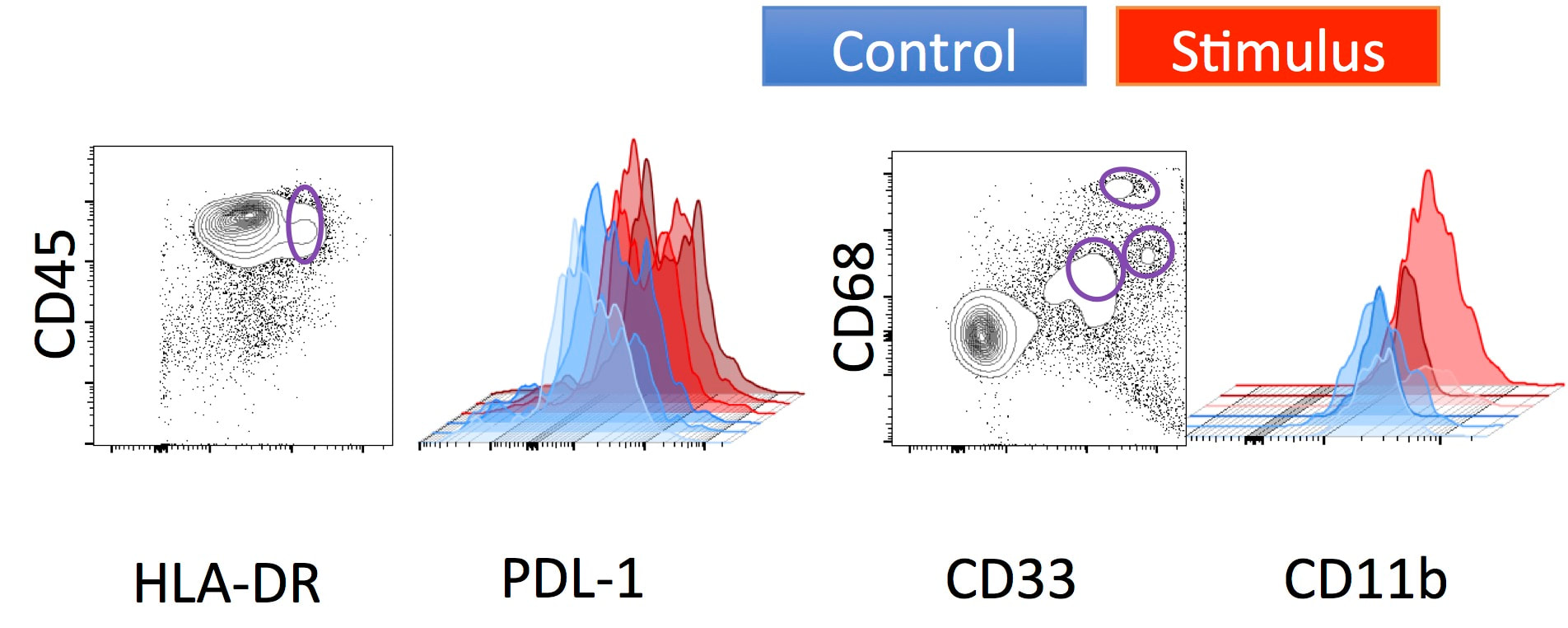Home > Immunology Assays > Macrophages/Monocytes
Assays for measuring monocyte and macrophage activation, cytokine release, migration, phagocytosis and polarizationMacrophages and monocytes are key effector cells of the innate immune system and are largely responsible for engulfing dying cells and pathogens. Macrophage dysregulation can be a key contributor to autoimmune, inflammatory and fibrotic diseases as well as cancer. Tissue resident macrophage populate organs early in development and may also be replenished by infiltrating monocytes which subsequently differentiate. Specialisedtissue resident macrophage populations include microglia in the brain and Kupffer cells in the liver.
Macrophages and monocytes display considerable heterogeneity, and whilst classically have been divided into ‘M1’ (‘pro-inflammatory’) and ‘M2’ (‘pro-resolution/anti-inflammatory’, ‘pro-fibrotic’) phenotypes, single cell studies have enabled identification of discrete phenotypes associated with function and/or location such as plaque associated macrophages, synovial tissue macrophages, tumour-associated macrophages, colitis-associated macrophages and scar-associated macrophages. Celentyx offers a range of established assays which support the development of therapeutics targeting macrophages. These range from comprehensive phenotyping studies performed using spectral flow cytometry and using a range of polarizing conditions (including those to study ‘M1’ and ‘M2’ phenotypes), to functional studies that quantify key macrophage functions such as phagocytosis and cytokine release. These studies can be performed using macrophages derived from human monocytes and also on cells isolated from human resected tissue. Assays may be suitable for evaluating modulators of ABCA7, adenosine receptors, Arginase, CD33, CD80, CD86, CD209, FcgRs, IDO, NLRP3, P2RX7, P2RY12, PI3K, TLRs, SIRPa, STAT3, STING, and others. Selected publication list... |
Further Immunology Assays
B Cells Haemolysis Testing Human Microglia Neutrophils/Granulocytes Phagocytosis Assays Regulatory T cells Spheroid Killing Assays Suppression Assays T Cell Activation Assays T Cell Exhaustion Assays Tumour infiltrating lymphocyte (TIL) and dissociated tumour cell assays Tumour Cell Killing Assays |
Phagocytosis
Assessment of Monocyte Subsets
Microglia - the macrophages of the brain
Also available monocyte-derived microglia (MDMi) generated from the peripheral blood monocytes of patients with neurodegenerative or psychiatric diseases provide an alternative approach:
Monocytes and Macrophages in Disease
|
Given the central role of macrophages in both the clearance of pathogens and tissue remodeling, any deviation in their phenotype, especially when maintained in a chronic inflammatory state, can result in significant tissue pathology. The presence of activated macrophages is thought to be pathogenic in a number of diseases including multiple sclerosis, where they strip myelin from the neuron sheath, chronic obstructive pulmonary disease, rheumatoid arthritis, cancer and atherosclerosis.
|






